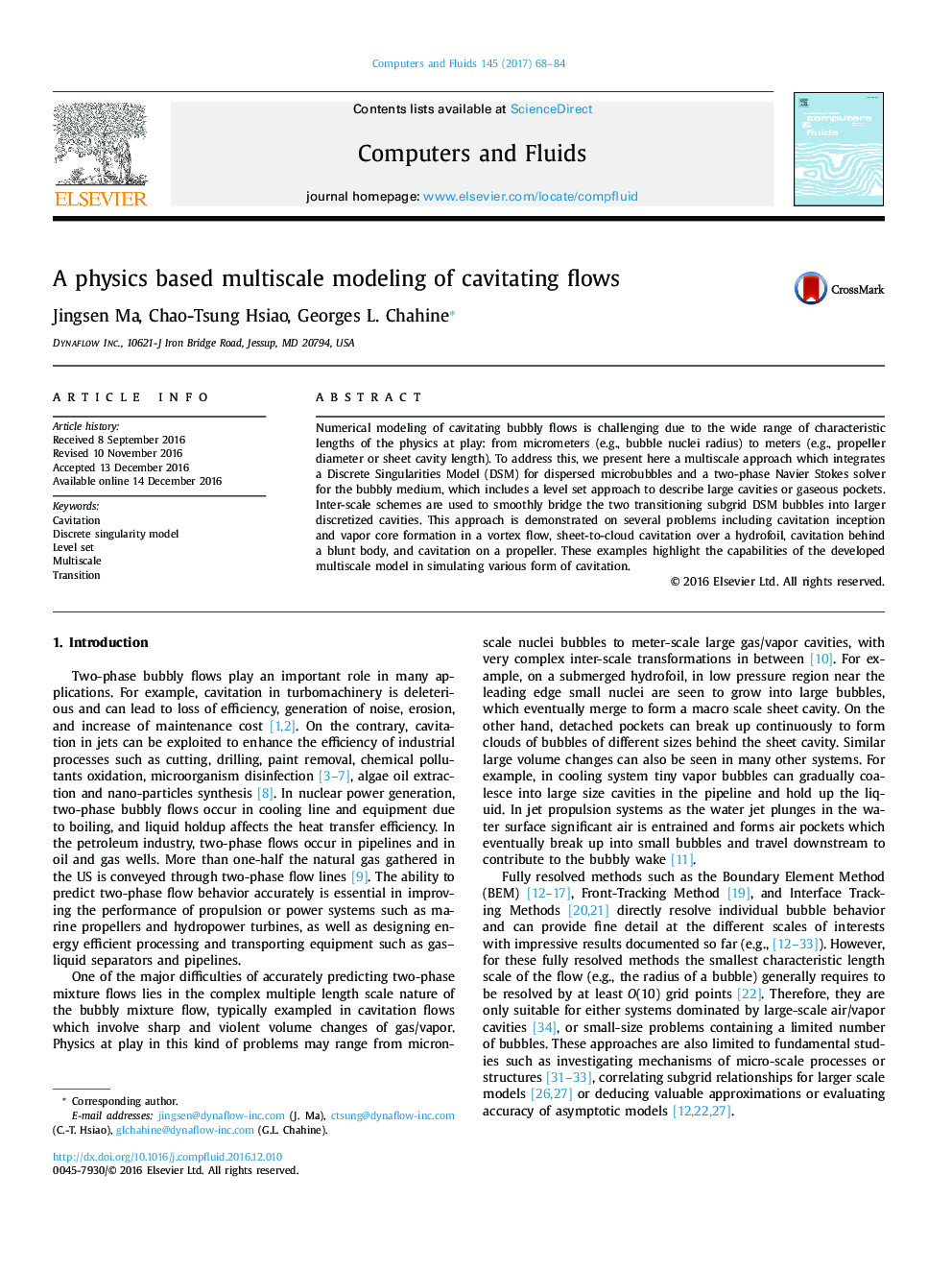| کد مقاله | کد نشریه | سال انتشار | مقاله انگلیسی | نسخه تمام متن |
|---|---|---|---|---|
| 5011914 | 1462666 | 2017 | 17 صفحه PDF | دانلود رایگان |
• A multiscale model handling both microbubbles and large cavities in flow is developed.
• A discrete singularity model is used to track microbubbles at microscale.
• A continuum model with level set method is used to capture large cavity at macroscale.
• An inter-scales transition scheme is used to bridge the micro and macro scales.
• The model is applied to simulate cavitating flows from inception to super cavitation.
Numerical modeling of cavitating bubbly flows is challenging due to the wide range of characteristic lengths of the physics at play: from micrometers (e.g., bubble nuclei radius) to meters (e.g., propeller diameter or sheet cavity length). To address this, we present here a multiscale approach which integrates a Discrete Singularities Model (DSM) for dispersed microbubbles and a two-phase Navier Stokes solver for the bubbly medium, which includes a level set approach to describe large cavities or gaseous pockets. Inter-scale schemes are used to smoothly bridge the two transitioning subgrid DSM bubbles into larger discretized cavities. This approach is demonstrated on several problems including cavitation inception and vapor core formation in a vortex flow, sheet-to-cloud cavitation over a hydrofoil, cavitation behind a blunt body, and cavitation on a propeller. These examples highlight the capabilities of the developed multiscale model in simulating various form of cavitation.
Journal: Computers & Fluids - Volume 145, 2 March 2017, Pages 68–84
